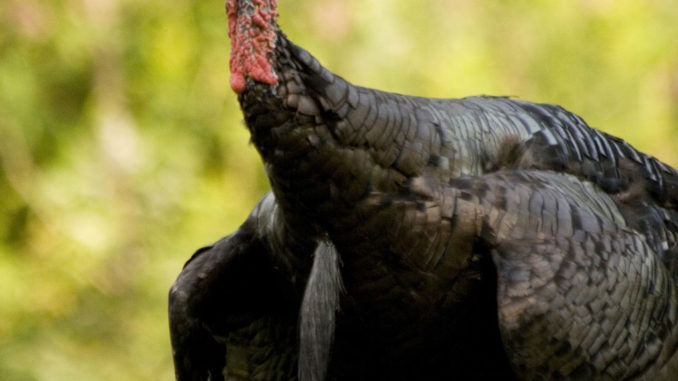
Use terrain to your advantage, call softly and let that big longbeard wander into range.
The beams from my headlights swung around, illuminating our designated parking place along the side of a gravel road that provides access to thousands of acres of public land in South Carolina’s Upstate. Shifting into park, we got out and eased in the predawn morning, readying our gear, then making our way up the mountain to find the old logging road that meandered along the ridge top.
We found our position on the crest of the mountain as the sky began to brighten. Not another soul was around, and we could barely contain our excitement as we listened to the morning awakening.
Leaning against a giant white pine, we heeded the silence. Then, the thunder started. A gobbler announced his presence 300 yards away, along the ridge, and a domino effect ensued. One after another, gobble after gobble rang out. Noting of the location of one in particular, we made our plan and headed into the morning as slowly as possible. Resting against another large tree, we settled in, our ears tuned in and our eyes wide open, anxiously listening and looking down the ridge.
Accessing good turkey habitat has always been an issue on public land. It seems like every gobbler that sounds off is answered by 30 hunters mimicking hens, trying to bring him into their sights. Yelps, cuts, clucks and purrs – hunters have tried them all. Finding a gobbler no one else has heard can be a real challenge.
Fortunately, South Carolina’s mountains contain thousands of acres, waiting for you to find your bird. A list of WMAs and Heritage Preserves in Game Zone One and along the western edge of Game Zone Two include Jocassee Gorges, Horse Pasture, Watson-Cooer, Keowee, Ashmore, Chandler, Stumphouse, Caesar’s Head/Jones Gap, Chestnut Ridge, and a few others – almost 15,000 acres of public-land opportunities for turkeys. Then throw in the Andrew Pickens Ranger District of the Sumter National Forest in Oconee County, and the acreage increases exponentially.
Mary Bunch, a wildlife biologist with the S.C. Department of Natural Resources, said the Upstate has a “very healthy turkey population.” And for the hunter willing to do a bit of walking, there’s no reason not to have an opportunity to fill a tag.
“The Jocassee Gorges is the largest in the area, but there are turkeys on virtually all of our WMAs in the Upstate,” she said, explaining that the issue is not finding land with turkeys, but finding turkeys on the land you want to hunt. “The birds are there, but you may have to get back off of the road a bit to find birds that haven’t been hunted hard or educated.”
Charles Ruth, a biologist who heads up SCDNR’s deer and turkey programs, agrees with Bunch.
“We have a strong population of turkeys across the state,” he said. “Like always, there are good years and bad years, but in general, it’s healthy.”
For Upstate hunters, this translates into a lot of opportunities. In 2012, the turkey survey showed a strong harvest, with Pickens County hunters taking 579 birds, Greenville County 563 and Oconee County 279.
Few hunters know Upstate turkeys better than Charles Hudson of Travelers Rest. He has been hunting turkeys in South Carolina since the early 1960s and has plenty of experience to share for harvesting upstate turkeys.
“I killed my first turkey in the upstate in the early 1970s; as soon as we had a season, I was after them.” Hudson said.
Every year since he killed his first Upstate bird, he has chased turkeys all over the Upstate and beyond. His advice?
“The first thing I would tell them is to get in shape, I mean, in good shape,” he said, explaining that hunting mountain birds is a real challenge that often requires a lot of walking. “And up here, there isn’t much flat ground.”
Hudson, like a lot of seasoned hunters, prefers to allow the morning to wake up naturally. While some hunters like to owl hoot to enlist a gobble from a roosted bird, he prefers to allow them to announce their position naturally.
“I know a lot of hunters will use the owl call to find turkey; personally, I have never liked using it. I like to let the woods wake up naturally, that way, they have no idea anything is different than it was yesterday.” Hudson said, explaining that the less turkeys know about your presence, the less likely you are to educate them.
“Hunting in the mountains, the gobbler voice will travel a great distance — the sound can and often does fool you,” he said. “Sometimes it sounds like he’s closer than he is, and other times, it sounds like he’s farther than he is. To be sure, I like to settle in around 200 yards or so before I start calling him to me.”
To a large degree, turkeys are turkeys across South Carolina; only the terrain is different. In the lush, laurel mountains, this can prove to up the ante. Turkeys tend to roost in the narrow, low-lying valleys between the ridges and fly to the side hills to feed. By setting up on top of a ridge, you put yourself in a great position to ambush turkeys feeding up or around the slope.
“When possible, I like to find old logging roads along the ridges; these make great travel corridors and also good strutting sights for toms, Hudson said.
When calling to a mountain turkey, hunters frequently tend to call too loud. Remembering that sound carries great distances through the open, mountain air, Hudson uses a homemade scratch-box call and softly yelps and clucks to get their attention. When more seduction is needed, Hudson reverts to one of the hand-crafted trumpet calls he sells, which generate a sound that elicits excited gobbles from toms.
“All of the public land in the Upstate holds turkeys, and I have hunted them all., Hudson said, admitting her prefers the larger WMA tracts. “The larger land has more turkeys, and the large land allows you to chase birds all day long without fear of wandering off of the property.”
Moreover, much of this land is barren of other hunters.
“Like a lot of things, most turkey hunters won’t put in the work to get back into the woods to find an old tom” Hudson said. “But for those who do, calling in and killing a big old mountain tom, well, you have done something worth remembering.”
Every time he chases mountain turkeys, Hudson admits he learns something new.
“I guess that’s what I love about turkey hunting; you never really know it all,” he said. “And I enjoy learning something new each time I go out.”
Sitting against that ancient white pine, I eased my wing bone to my mouth and uttered a gentle long, yelp, paused and then a softer one, barely audible to myself. Yelp, yelp, pause.
After what seemed like hours, the woods echoed with the thunderous gobble of an excited tom. My eyes scanned the forest for his iridescent black plumage. Silence burned my ears, then another announcement, “Gobble! Gobble!”
Experience has taught me that in moments like this, “less is more,” so I sat motionless, looking and listening. The rustle of the leaves caught my attention, as three hens were feeding a mere 18 yards away, and closing. Along the logging road, covered with straw, I noticed legs moving through the understory. If he stayed his course, he would walk to within six feet of my waiting shotgun.
“Never look an old gobbler in the eye” — something I learned years ago — echoed through my mind as the longbeard moved towards me. Instead, I looked at his feet, knowing they would carry him to his demise. Thirty yards, 25, now 25, when he reached 10, I raised my gun.
My finger lay against the safety, ready for him to pass one last oak tree. To my right, I could hear the hens purring and feeding. At eight yards, the gobbler thundered again and immediately broke into a strut. His drumming clearly audible, I found his blue and red head against my sight and the woods roared as a load of Winchester No. 5’s left the barrel of my Benelli and ended the dance.
DESTINATION INFORMATION
WHEN TO GO: Spring turkey season in Game Zone One and Game Zone 2 in the Upstate opens April 1 and runs through May 1. The bag limit is five gobblers. Season bag limits may be smaller on particular WMAs, including Keowee and Fants Grove (two birds),
WHERE TO GO: The Andrew Pickens Ranger District of the Sumter National Forest is the largest area of public land available to turkey hunters, covering more than 85,000 acres.. It is wholly in Oconee County, with headquarters in Mountain Rest. The Jocassee Gorges in Pickens County covers 33,000 acres. The WMAs around Lake Hartwell and Lake Keowee — Fant’s Grove and Keowee, cover 8,540 and 4,100 acres, respectively. The remainer of public-hunting tracts in the area (Chestnut Ridge, Stumphouse, Caesars Head/Jones Gap, Watson-Cooper, Ashmore, Eva Russell Chandler, Laurel Fork, Eastatoe Creek, Buzzard Roost, Brasstown Creek and Wadokee Mountain) are between 47 and 1886 acres.
HUNTING INFO: Sumter National Forest, Andrew Pickens Ranger District, Mountain Rest, 864-638-9568; SCDNR, Clemson Office, 864-654-6738. Charles Hudson Calls, Travelers Rest, 864-895-2787.
ACCOMMODATIONS: State parks are abundant in Game Zone 1. Table Rock offers camping opportunities and cabins for rent. Oconee State Park also has camping opportunities. See www.southcarolinaparks.com. For hotels, visit Upstate SC USA, www.upstatescusa.com.
MAPS: Visit www.dnr.sc.gov/hunting/zones/zone1.html and www.dnr.sc.gov/hunting/zones/zone2.html.

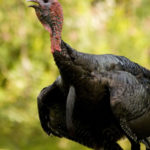
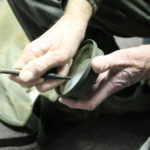
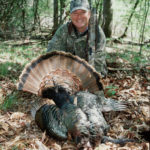
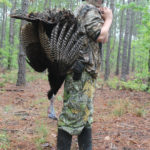



Be the first to comment